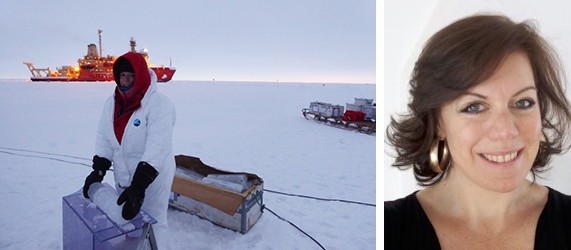During the PIPERS expedition on the N.B. Palmer from April to June 2017, we performed continuous measurements of methane concentrations in the atmosphere and in the surface water from New Zealand to the polynyas of the Ross Sea. Discrete sampling was carried out in parallel to calibrate the continuous systems and to later measure the stable isotope ratios of both gases in the water, in the ice and in the air. The stable isotope data enable unravelling the pathways involved in gas formation and removal. While the concentrations of both gases were relatively low in the surface waters of polynyas, the preliminary atmospheric data show higher methane levels in the atmosphere at locations where sea ice formation was most intense. These data together with the isotopic ratios of methane measured in ice will be discussed to unravel the role of sea ice on the methane budget.
Célia J. Sapart is a postdoctoral researcher at the Laboratoire de Glaciologie, Université Libre de Bruxelles, working on the role of land and sea ice on the methane budget. The main goal of her research is to evaluate the contribution of the polar regions to the methane budget in analyzing methane mixing and isotope ratios in different type of ice, e.g. subarctic lake ice and sea ice.
She also investigates the past methane budget in analyzing the methane trapped in polar ice sheet in order to better understand the natural factors that control methane emission and removal processes in the past.
She completed her PhD research at IMAU, Utrecht University, in June 2012 and her thesis was entitled: “Variations in the methane budget over the last two millennia”.
Célia wrote a blog of her Antarctic Ocean Experience, you can read it here.
